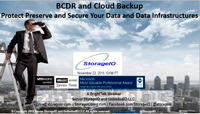PACE your Server Storage I/O decision making, its about application requirements
PACE your Server Storage I/O decision-making, it’s about application requirements. Regardless of if you are looking for physical, software-defined virtual, cloud or container storage, block, file or object, primary, secondary or protection copies, standalone, converged, hyper-converged, cluster in a box or other forms of storage and packaging, when it comes to server storage I/O decision-making, it’s about the applications.
I often see people deciding on the best storage before the questions of requirements, needs and wants are even mentioned. Sure the technology is important, so too are the techniques and trends including using new things in new ways, as well as old things in new ways. There are lots of buzzwords on the storage scene these days. But don’t even think about buying it until you truly understand your business’ storage needs.
However when it comes down to it unless you have a unique need, most environments server, and storage I/O resources exist to protect preserve and serve applications and their information or data. Recently I did a couple of articles over at Network Computing; these are tied to server and storage I/O decision-making balancing technology buzzwords with business and application requirements.
PACE and common applications characteristics

A theme I mention in the above two articles as well as elsewhere on server, storage I/O and applications is PACE. That is, application Performance Availability Capacity Economics (PACE). Different applications will have various attributes, in general, as well as how they are used. For example database transaction activity vs. reporting or analytics, logs and journals vs. redo logs, indices, tables, indices, import/export, scratch and temp space. PACE (figure 2.7) describes the applications and data characters and needs.

Common Application Pace Attributes
All applications have PACE attributes
- Those PACE attributes vary by application and usage
- Some applications and their data are more active vs. others
- PACE characteristics will vary within different parts of an application
Think of an application along with associated data PACE as its personality or how it behaves, what it does, how it does it and when along with value, benefit or cost along with Quality of Service (QoS) attributes. Understanding the applications in different environments, data value and associated PACE attributes is essential for making informed server, storage I/O decisions from configuration to acquisitions or upgrades, when, where, why and how to protect, or performance optimization along with capacity planning, reporting, and troubleshooting, not to mention addressing budget concerns.
Data and Application PACE
Primary PACE attributes for active and inactive applications and data:
P – Performance and activity (how things get used)
A – Availability and durability (resiliency and protection)
C – Capacity and space (what things use or occupy)
E – Energy and Economics (people, budgets and other barriers)
Some applications need more performance (server computer, or storage and network I/O) while others need space capacity (storage, memory, network or I/O connectivity). Likewise, some applications have different availability needs (data protection, durability, security, resiliency, backup, BC, DR) that determine various tools, technologies and techniques to use. Budgets are also a concern which for some applications meaning enabling more performance per cost while others are focused on maximizing space capacity and protection level per cost. PACE attributes also define or influence policies for QoS (performance, availability, capacity), as well as thresholds, limits, quotas, retention and disposition among others.
Where to learn more
Learn more about data infrastructures and tradecraft related trends, tools, technologies and topics via the following links:
- What does server storage I/O scaling mean to you?
- Selecting Storage: Start With Requirements (Via NetworkComputing)
- Selecting Storage: It’s All About The Applications (Via NetworkComputing)
- Is Computer Data Storage Complex? It Depends
- Software Defined Data Infrastructure Essentials Book by Greg Schulz
- Part 2 – 4 3 2 1 Data Protection Application Data Availability
- Part 3 – Application Data Characteristics Types Everything Is Not The Same
- Part 4 – Application Data Volume Velocity Variety Everything Is Not The Same
- Dont Stop Learning Expand Your Skills Experiences Everyday
- Part 5 – Application Data Access Life cycle Patterns Everything Not The Same
- Data Infrastructure server storage I/O network Recommended Reading
- World Backup Day 2018 Data Protection Readiness Reminder
- Data Infrastructure Server Storage I/O related Tradecraft Overview
- Data Infrastructure Server Storage I/O Tradecraft Trends
- Data Infrastructure Overview, Its What’s Inside of Data Centers
- 4 3 2 1 and 3 2 1 data protection best practices
- Garbage data in, garbage information out, big data or big garbage?
- GDPR (General Data Protection Regulation) Resources Are You Ready?
- If NVMe is the answer, what are the questions?
- NVMe Primer (or refresh), The NVMe Place, The SSD Place, and the Object Storage Center
Additional learning experiences along with common questions (and answers), as well as tips can be found in Software Defined Data Infrastructure Essentials book.
What this all means
The best storage will be the one that meets or exceeds your application requirements instead of the solution that meets somebody else’s needs or wants. Keep in mind, PACE your Server Storage I/O decision making, it is about application requirements
Ok, nuff said, for now.
Cheers Gs
Greg Schulz – Microsoft MVP Cloud and Data Center Management, VMware vExpert 2010-2018. Author of Software Defined Data Infrastructure Essentials (CRC Press), as well as Cloud and Virtual Data Storage Networking (CRC Press), The Green and Virtual Data Center (CRC Press), Resilient Storage Networks (Elsevier) and twitter @storageio. Courteous comments are welcome for consideration. First published on https://storageioblog.com any reproduction in whole, in part, with changes to content, without source attribution under title or without permission is forbidden.
All Comments, (C) and (TM) belong to their owners/posters, Other content (C) Copyright 2006-2024 Server StorageIO and UnlimitedIO. All Rights Reserved. StorageIO is a registered Trade Mark (TM) of Server StorageIO.







































